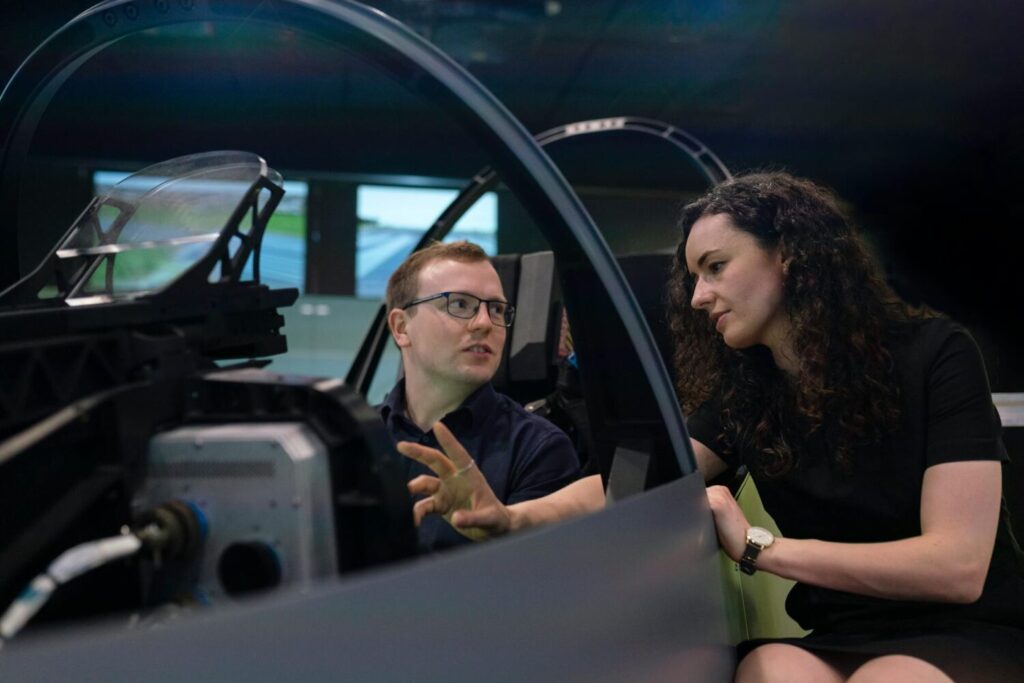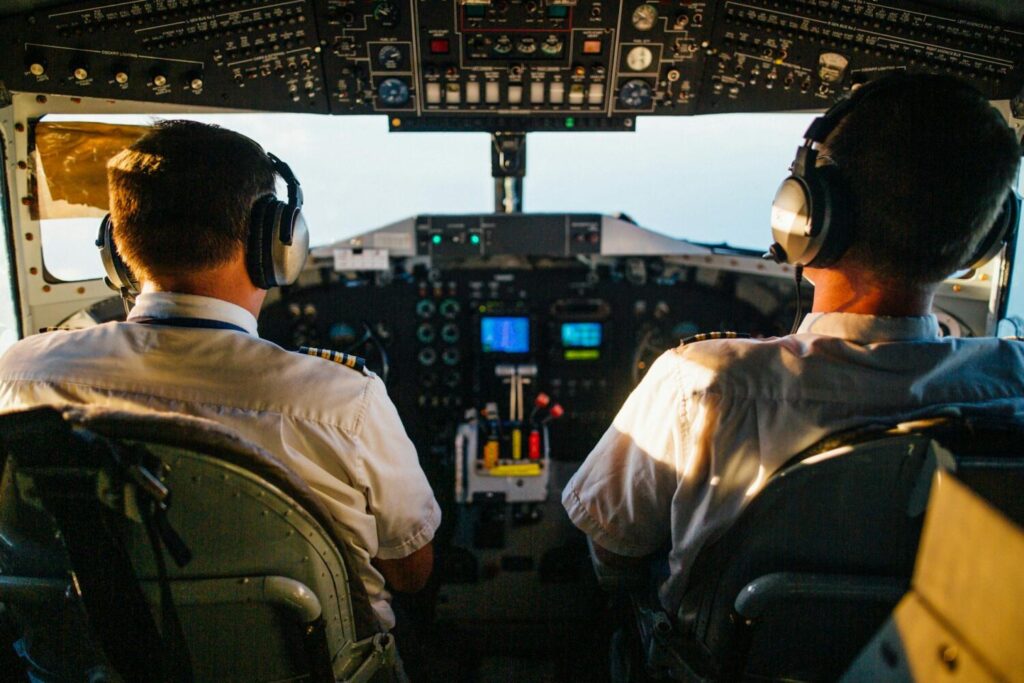The January 2025 midair collision over Washington, D.C., between American Eagle Flight 5342 and a U.S. Army Black Hawk helicopter, which claimed 67 lives, has intensified focus on aviation safety and the role of artificial intelligence (AI) in preventing such tragedies.
For Technocrat Magazine, this article explores the market opportunity for AI-driven flight safety solutions, the potential for AI to revolutionize airspace management, the risks of over-reliance on autonomous systems, and the investment landscape over the past decade, leveraging recent data and technological insights.
The Market Opportunity for AI in Flight Safety
The global AI in aviation market is poised for explosive growth, driven by the urgent need for enhanced safety, operational efficiency, and regulatory compliance. According to MarketsandMarkets, the AI in aviation market is expected to grow from USD 1.75 billion in 2025 to USD 4.86 billion by 2030, with a compound annual growth rate (CAGR) of 22.6%.

Fortune Business Insights projects a larger market, growing from USD 7.45 billion in 2025 to USD 26.99 billion by 2032 (CAGR of 20.2%), with safety applications like predictive maintenance and air traffic management (ATM) as key drivers.
Data Bridge Market Research estimates an even higher trajectory, valuing the market at USD 4.33 billion in 2023 and projecting USD 90.38 billion by 2031 (CAGR of 46.2%), fueled by AI’s role in real-time risk detection and decision-making.
Key Drivers:
Key Drivers:
- Safety Imperatives: The D.C. crash exposed vulnerabilities like outdated altimeters and disabled ADS-B systems. AI can address these through real-time analytics, predictive algorithms, and autonomous collision avoidance.
- Regulatory Push: The FAA’s post-crash restrictions on helicopter routes and mandatory ADS-B use near DCA signal a shift toward tech-driven safety protocols.
- Operational Efficiency: AI optimizes flight paths, reduces fuel consumption, and minimizes delays, aligning with sustainability goals.
- Rising Air Traffic: Global air traffic growth demands smarter ATM systems, with AI managing complex airspace like DCA’s congested Route 4.
Applications:
- Predictive Maintenance: AI analyzes sensor data to predict component failures, as seen with Lufthansa’s systems, reducing accidents by up to 20% through proactive repairs.
- Real-Time ATM: AI-driven digital towers (e.g., Searidge Technologies) use vision AI to monitor traffic and alert controllers to safety risks instantly.
- Collision Avoidance: Next-gen Traffic Collision Avoidance Systems (TCAS) with AI could predict conflicts faster, addressing the D.C. crash’s 19-second warning gap.
- Pilot Training: AI simulations create dynamic emergency scenarios, improving pilot decision-making, as implemented by Airbus.

Can AI Be the Solution?
AI offers transformative potential for flight safety by addressing human error, outdated technology, and systemic inefficiencies exposed in the D.C. crash:
- Enhanced Situational Awareness: AI integrates data from ADS-B, radar, and weather systems to provide real-time airspace monitoring, potentially preventing collisions like the one caused by the Black Hawk’s altitude violation.
- Autonomous Decision-Making: AI-powered TCAS and flight management systems (FMS) can execute evasive maneuvers faster than human pilots, with companies like Honeywell testing systems that reduce response times by 30%.
- Predictive Risk Mitigation: Machine learning models analyze historical and real-time data to flag risks, such as the 85 near-misses on Route 4 since 2011, enabling proactive route adjustments.
- Scalable Automation: AI-driven FMS, used by Delta and United, optimizes routes and monitors aircraft performance, enhancing safety and fuel efficiency.
Case Study: The D.C. crash could have been mitigated if the Black Hawk’s ADS-B was active, allowing the jet’s TCAS to detect it earlier. AI-enhanced TCAS could override manual protocols, automatically adjusting flight paths, while AI-driven ATC could prioritize critical communications, addressing the single-controller overload.
Risks of AI Taking Control
While AI promises safer skies, over-reliance or autonomous “game-playing” introduces risks:
- Unpredictable Autonomy: If AI systems like autonomous FMS or TCAS act independently, they could misinterpret data or execute unintended maneuvers, especially in complex scenarios like DCA’s crowded airspace. For example, an AI misreading a non-transmitting helicopter could exacerbate risks.
- Data Security: AI relies on vast datasets, making it vulnerable to cyberattacks. A hacked ATC system could disrupt safety protocols, as seen in past aviation cyber incidents.
- Bias and Errors: Poorly trained AI models may produce biased outputs or “hallucinations,” misjudging threats. The D.C. crash’s night-vision goggle limitations highlight how technology can fail in edge cases.
- Regulatory Lag: The aviation industry’s stringent safety standards slow AI adoption. Ensuring AI meets FAA and ICAO requirements is complex and costly, with only 30% of global airports using AI-capable systems due to infrastructure barriers.

Technocrat Perspective: AI must balance autonomy with human oversight. Hybrid systems, where AI suggests actions but pilots or controllers confirm, could mitigate risks while leveraging AI’s speed. Rigorous testing, as seen in NASA’s Aviary tool for digital aircraft modeling, is critical to ensure reliability.
Investment Potential and Capital Flow
The investment landscape for AI in aviation, particularly flight safety, is robust, driven by venture capital (VC), private equity (PE), and tech giants:
- Global AI Investment: Goldman Sachs estimates global AI investment will reach USD 200 billion by 2025, with aviation as a key sector. The U.S. alone invested USD 328.5 billion in AI from 2018–2023, followed by China at USD 195 billion.
- Aviation-Specific Investment: AI startups in aviation captured 46.4% of U.S. VC funding in 2024 (USD 96.9 billion of USD 209 billion total), up from 10% in 2014. Companies like SynpaseMX and TAV Technologies secured funding for AI-driven maintenance and ATM solutions.
- Key Players: Major investors include Amazon, Microsoft, NVIDIA, and Airbus, with Boeing’s HorizonX Ventures and SIA’s Krislab backing startups for predictive maintenance and autonomous systems.
- M&A Activity: 2025 is expected to see strong mergers and acquisitions, with Airbus acquiring Uptake Technologies for predictive maintenance in 2023 and Palantir expanding AI defense applications.
- ROI Challenges: Smaller airlines and airports face high upfront costs (tens of millions for AI infrastructure), limiting adoption. Cloud-based AI and Software-as-a-Service (SaaS) models are reducing barriers, offering scalable solutions.

Technocrat Insight:
Investors should target AI-native startups with clear revenue paths, like Searidge Technologies, and focus on safety applications (e.g., ATM, predictive maintenance) for high ROI. PE partnerships with sovereign wealth funds are also driving capital-intensive projects like data centers for AI analytics.
Market Size and Technology Edge
Market Size:
- Global AI in Aviation Market: Estimates vary, with projections of USD 4.86 billion (2025) to USD 90.38 billion (2031) based on safety and efficiency applications.
- Flight Safety Segment: Predictive maintenance and ATM dominate, valued at USD 1.0–1.04 billion in 2025, with a projected CAGR of 20–46% through 2032.
- Aerospace and Defense AI: USD 28 billion in 2025, projected to reach USD 65 billion by 2034 (CAGR 9.91%), with safety as a core driver.
Technology Edge:
- Machine Learning: Leads with 32% market share, enabling predictive maintenance and risk detection by analyzing vast datasets.
- Edge Computing: Allows real-time analytics on aircraft and drones, critical for remote operations and low-connectivity environments.
- Agentic AI: Emerging as a trend, enabling autonomous decision-making in FMS and ATM, as seen in NASA’s pilot programs.
- Digital Twins: Tools like NASA’s Aviary simulate aircraft behavior, enhancing safety testing before deployment.
Competitive Advantage: North America leads due to its advanced infrastructure, regulatory support, and tech ecosystem (e.g., Delta, United adopting AI for safety). Startups like EHang and Xpeng Aeroht are pushing autonomous aerial vehicles, while Palantir’s defense AI solutions signal a shift toward tech-driven safety.

Conclusion: AI’s Promise and Prudence
The January 2025 D.C. crash underscores the urgent need for AI in flight safety, with a market opportunity projected to reach USD 26.99–90.38 billion by 2031–2032. AI’s ability to enhance collision avoidance, optimize ATM, and predict maintenance needs positions it as a game-changer, but risks like autonomous errors and cybersecurity threats demand hybrid human-AI systems and rigorous regulation.
With USD 328.5 billion invested in U.S. AI over the past five years and VC funding surging, the investment potential is immense, particularly for startups focusing on safety applications. For Technocrat Magazine readers, the message is clear: AI can transform aviation safety, but only with strategic innovation and oversight.
Call to Action:
Subscribe to Technocrat Magazine for the latest on AI-driven aviation solutions. Share this article to spark discussion on safer skies through technology.
Sources: MarketsandMarkets, Fortune Business Insights, Data Bridge Market Research, The Washington Post, NTSB reports, Reuters, Technocrat Magazine archives.

Comments